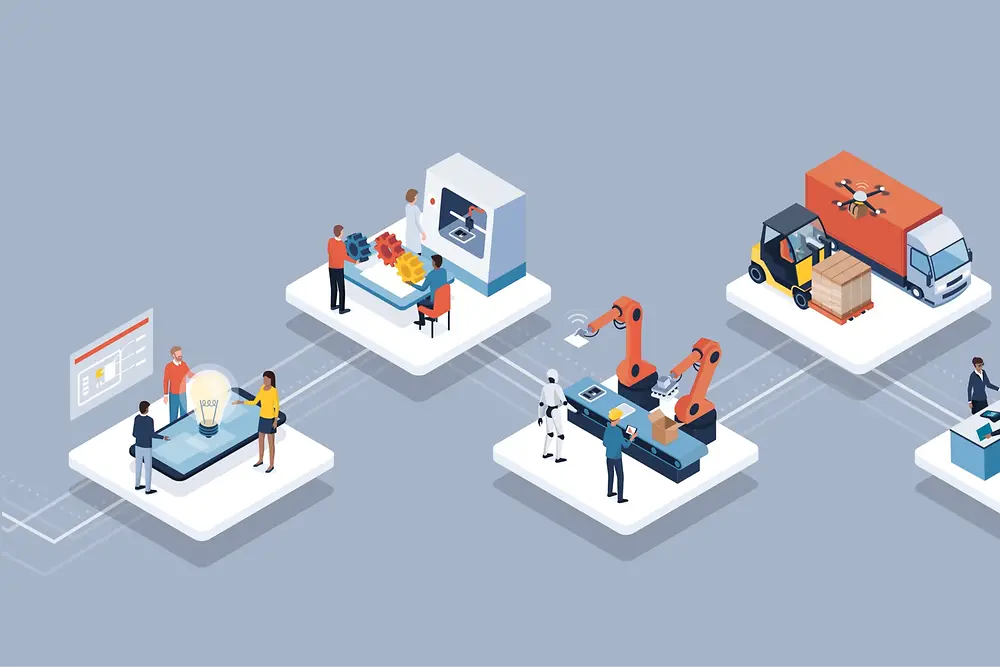Discover the brands and technologies from our business units Henkel Adhesive Technologies and Henkel Consumer Brands.
The digital doctor

Printed electronics are a game-changer. And they’re also a potential life-saver. Innovative inks from Henkel are now being used to print electronic circuits onto almost any surface or material – opening up amazing opportunities for companies in, for example, the healthcare industry to improve quality of life for patients.
Printed electronics on the rise
Henkel scientists have achieved major progress related to printed electronics in the last few years. Inks containing metal particles that conduct electricity can now be printed onto a huge range of materials, including flexible surfaces like fabric for diapers or medical sticking plasters. The ink allows electricity to flow around the circuit, which enables a thinner, more flexible and more cost-effective alternative to standard rigid circuit boards. This is generating rapidly rising demand from companies that want to add smart functions to their products. In fact, the market for printed electronics is expected to reach $65 billion by 2024.
Relieving pressure on healthcare systems
As people live longer and the ageing population places strain on the healthcare sector, hospitals or care institutions are starting to use this emerging technology to improve quality of life for patients. Henkel’s conductive inks, for example, are used to print the electronic circuits as moisture sensors onto the inside of diapers for elderly patients. Wi-fi or Bluetooth modules then tell nursing staff when it’s time to change the diaper. The smart diapers increase comfort for the wearer, while also relieving the burden on caregivers and reducing emotional stress that patients sometimes feel when diapers are changed unnecessarily.
Monitoring what matters most
Similarly, printed electronics are used in smart patches that help to reduce pressure on healthcare systems related to the rising number of people with chronic illnesses. People with heart conditions, for example, can use these patches to continuously track their ECG, which their doctors can monitor remotely. People with diabetes can use them to monitor blood glucose levels continuously instead of taking blood samples several times throughout the day, which helps them identify exactly the right moment to inject insulin.
Smart health patches also make it possible to monitor patients’ heart rates, brain activity or breathing patterns remotely. This increases comfort by allowing patients to stay at home, while also reducing the number of visits to clinics or hospitals. Henkel’s conductive inks and special adhesives for attaching patches to the skin are enabling new smart medical devices to be produced in high volume – and with reliable performance.
The global market for electronic skin patches is expected to more than double between 2018 and 2024.
“Henkel is in a strong position in this market because we’ve got a toolbox of relevant technologies – including inks, adhesives, coatings and gasketing solutions – as well as a strong network along the entire value chain,” says Stijn Gillissen, Global Head of Printed Electronics at Henkel. “This means we can support the design of new smart products by leveraging our existing relationships and using solutions that our customers already rely on”.
Remote monitoring of coronavirus patients
In cooperation with six medical and technology companies, Henkel has developed a smart health patch that allows continuous remote and wireless monitoring of the respiration, heart rate and soon also temperature of patients. The product – initially set up to monitor the vital functions of patients with heart failure and epilepsy – will soon be tested for the use of monitoring coronavirus patients in a Belgian hospital.
“The smart patch demonstrates the huge potentials of printed electronics applications and the power of collaborative approaches in the market”, says Stijn Gillissen. “At the moment, most COVID-19 patients’ vital signs are recorded manually. The staff in hospitals and care homes need to take these vital signs several times a day and then process the data manually. Our system has the potential to save them a lot of time and reduce the amount of times they are exposed to possible infection.”
The system also offers great advantages to patients in home quarantine or in care homes as it enables to take and send measurements automatically. They can be certain that the measurements are correct and that they are being monitored constantly. This can offer great reassurance, particularly to elderly people in retirement homes and their families.










